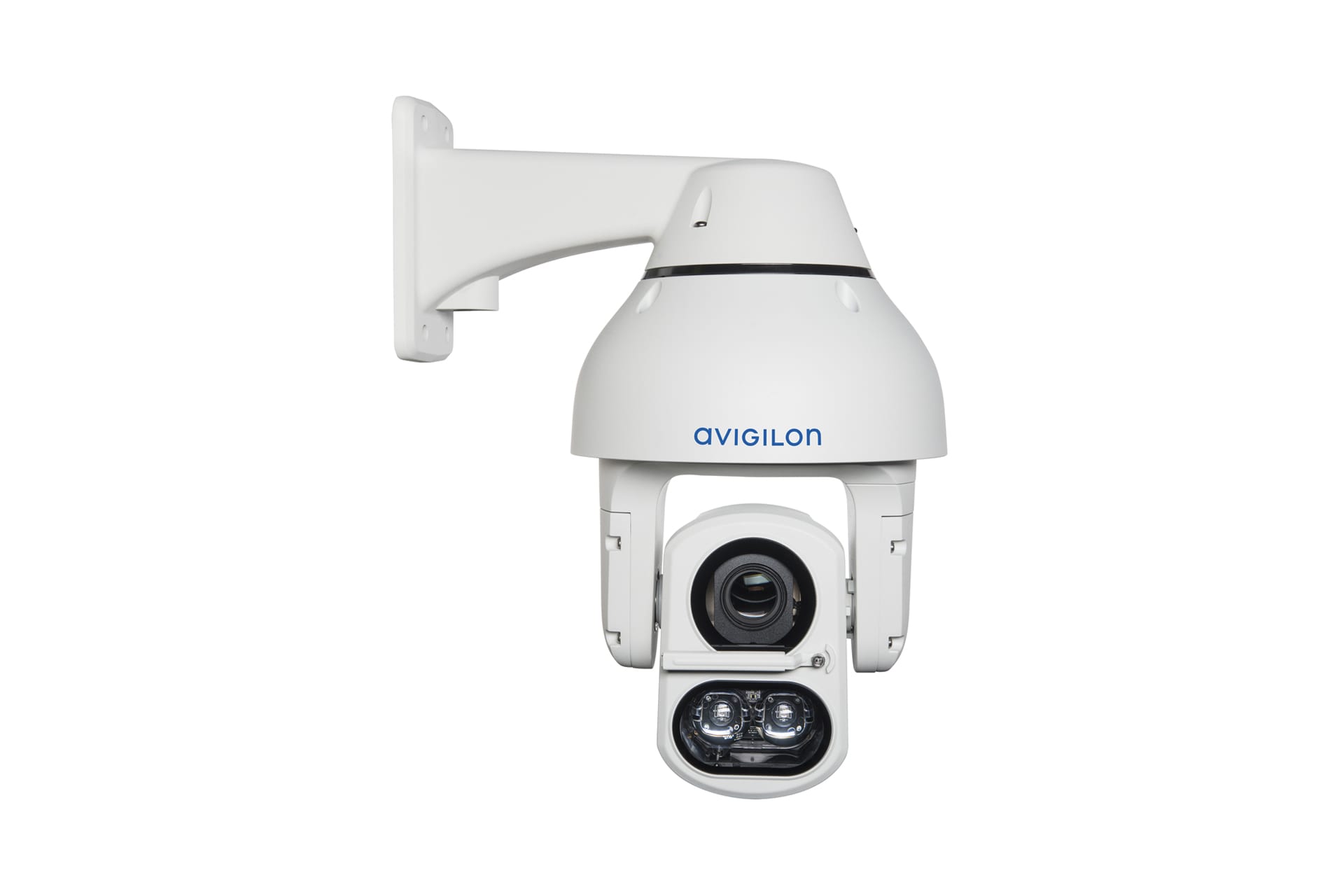What are PTZ Cameras?
A PTZ camera, or Pan-tilt-zoom camera to give it its full name, is designed to be able to swivel left to right, up and down, and also zoom in and out to be able to see in greater detail. Traditional cameras feature a stationary lens and are used to focus on a given area, whereas PTZ cameras have a wider range of flexibility and are used to monitor wide open areas where a 180- or 360-degree view is advantageous in order to be able to see the full picture of a scene.
Depending on the camera or software, they can also be set to automatically follow motion-triggered activity or follow a pre-set schedule around a determined route. A PTZ camera is often used in unison with a fixed camera. The PTZ camera is set to track movement, whilst the fixed camera focuses on a given area in order to take detailed shots.
Where PTZ cameras are commonly used:
The correct placement of PTZ cameras is crucial in order to eliminate any potential blindspots, PTZ cameras are commonly used in the following sectors:
- Supermarkets
- Airports
- Large outdoor areas
- Churches
- Museums
- Construction Sites
- Retail sites
- Industrial parks
Pros and Cons of PTZ Security Cameras
Every CCTV camera has its pros and cons and each is suited to perform a specific function when it comes to the security of your premises. Below are the pros and cons of the PTZ camera.
Features and Advantages of PTZ Cameras:
- Large Field of View: PTZ cameras are used to monitor large areas and are often recommended to be used in conjunction with a fixed camera to avoid any gaps in coverage. Depending on the PTZ used, the PTZ camera can move anywhere between zero pan/tilt and the full 360-degree/180-degree tilt.
- Time-Based Auto Scan: PTZ cameras can also be configured with an auto-pilot function that can scan pre-defined areas and move in a pre-determined pattern. The PTZ cameras can be configured to pan, tilt and zoom every minute to capture certain areas of interest within the area of the camera’s surveillance capability.
- Motion-Based Auto Tracking: A fantastic function with PTZ cameras is a function that enables PTZ cameras to adjust their field of view to follow moving objects automatically. This type of functionality is ideal if you need to monitor a large space during the night.
- Remote Camera Control: An operator can quickly take manual control of the system and remotely track any suspicious activity without going on-site.
Disadvantages of PTZ Cameras:
- Limited View: The advantage of pan-tilt-zoom can also be seen as a disadvantage. If the PTZ camera is not looking at an area then it will not be able to pick up what is occurring there. Although the field of view area of a PTZ camera can be fast, there are gaps where people can slip through – hence the recommendation for a fixed camera to mitigate these gaps.
- Shorter Lifespan: Due to the moving parts found within PTZ cameras it offers more opportunity to fail than a fixed solution. With preventative maintenance, these can be counteracted and reduced.
- Surveillance Blind-Spots: If the PTZ camera has been set to follow a pre-defined route or to auto, then the camera may pan continuously to the next pre-set, and the next – this is regardless of what may be happening in its field of view. The ideal way to use a PTZ camera is to have a manned guard controlling the camera, however, this does of course add additional labour costs to security costs. A better option would be to use analytics on your PTZ camera that looks to track movement, in conjunction with a fixed camera, which will then give you a full field of vision and recording for when you need it.
Clarion offer a range of commercial security systems, business CCTV systems, access control systems and commercial intruder alarms for clients in Manchester, the North West and across the UK. For more information on our services please contact us today to discuss your needs.





